Study: 70% of IT Professionals Cite Top Benefit of Unified IT as 'Consistent Data Across Systems and IT Departments'
 Our IT surveys have become a huge hit! The press releases and blogs we put out recapping the results from our surveys are consistently picked up and republished by third parties. We're happy to be able to provide such useful insights into the IT professional's experience, benefitting not just us, but the IT industry as a whole.
Our IT surveys have become a huge hit! The press releases and blogs we put out recapping the results from our surveys are consistently picked up and republished by third parties. We're happy to be able to provide such useful insights into the IT professional's experience, benefitting not just us, but the IT industry as a whole.
Before we get into the results of our most recent survey, be sure to check out some of our previous studies:
- Nearly Half of IT Professionals Are Still Tracking IT Assets in Spreadsheets
- 70% of IT Professionals Report Working During Their PTO
- 59% of IT Professionals Still Don’t Have All of Their Users on Windows 10
- 85% of Employees Don’t Have all the Resources They Need on Day One to do Their Job
In our most recent survey, we asked questions related to Unified IT to more than 1,300 IT professionals. Read on for highlights from the report or download the full report here.
What is Unified IT?
Unified IT is most typically defined as the practice of having a unified experience across endpoint management, security, asset, and enterprise service management.
When we asked 1,300 IT professionals to describe the term Unified IT, these words came up the most:
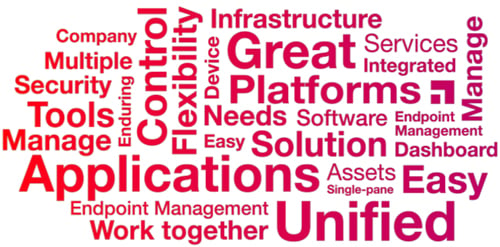
Top Benefits of Unified IT
While individual definitions may vary, the ultimate goal of Unified IT is a unified approach to all departments that touch IT.
Here are the top benefits according to our survey respondents:
- Consistent data across systems and IT departments – 70%
- Improved user experience – 61%
- Ease of use – 60%
- Consistent/aligned processes – 59%
- Cost savings – 58%
When asked how confident IT professionals were in the discovery and inventory of various aspects of IT, here is what they said:
Endpoints
- Confident and extremely confident – 63%
- Somewhat confident – 30%
- Not at all confident – 8%
Software/applications
- Confident and extremely confident – 59%
- Somewhat confident – 32%
- Not at all confident – 9%
When asked how confident IT professionals were in their endpoints receiving and implementing appropriate security patches, here is what they said:
- Confident and extremely confident – 59%
- Somewhat confident – 32%
- Not at all confident – 8%
When it comes to managing and securing endpoints, we asked IT professionals if they have a solution that does both:
- Yes – 59%
- No – 41%
Why is a Unified IT solution important?
In another word graph, here are the words that came up more commonly when we asked respondents why a single solution for managing and securing endpoints would be useful:
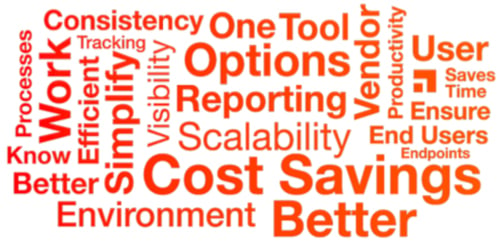
Balancing IT Initiatives
In addition to Unified IT, there are are many inititatives IT professionals are trying to balance.
Here are the initiatives most top of mind for IT professionals:
- Improved patching and security – 62%
- Cutting down time to resolve incidents, patch systems, etc. – 61%
- Improved IT reporting – 47%
- Unifying IT – 39%
- IT governance – 30%
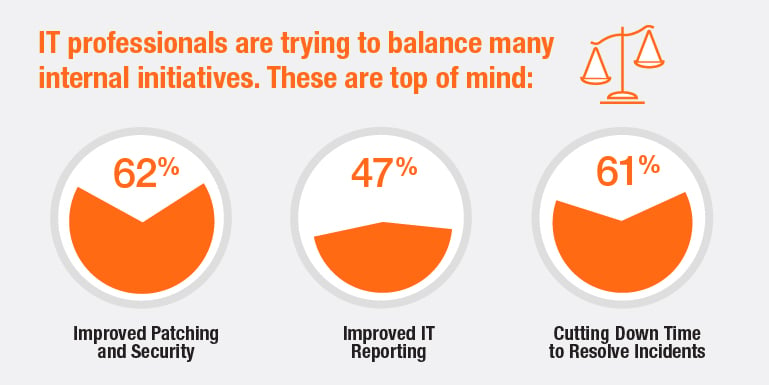
Sharing Data
When looking across an IT portfolio, IT professionals are sharing data a number of ways.
The top three ways respondent share data include:
- Data is accessible via a shared workspace/portal – 42%
- Data sharing is already scheduled through IT systems automatically – 22%
- Shared data extracts – 14%
When it comes to improving visibility in an IT environment, IT professionals are using the following resources:
- Endpoint management solution – 65%
- Inventory tool(s) – 48%
- Reporting tools – 45%
- Spreadsheets – 40%
- ITAM solution – 15%
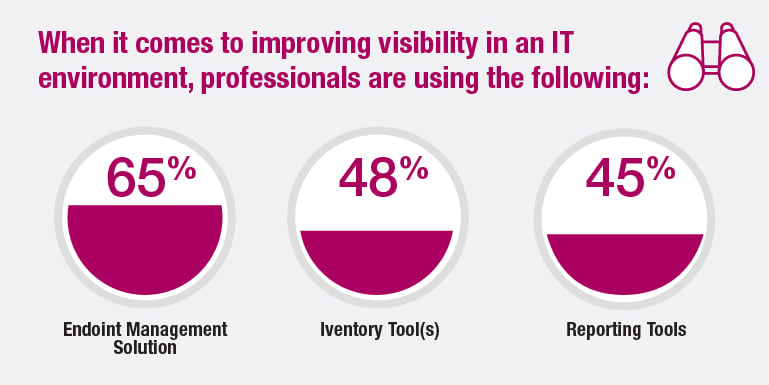
Working with Vendors
As an IT organization, professionals report working with many vendors.
Here are the top three responses of the number of vendors IT professionals work with:
- 11 or more vendors – 50%
- 5 to 7 vendors – 20%
- 8 to 10 vendors – 16%
This causes IT professionals to spend hours renegotiating contracts with their IT vendors. But it definitely varies by case.
Here’s the complete breakdown of time spent renegotiating contracts with IT vendors:
- Hours – 19%
- Days – 33%
- Weeks – 35%
- Months – 13%
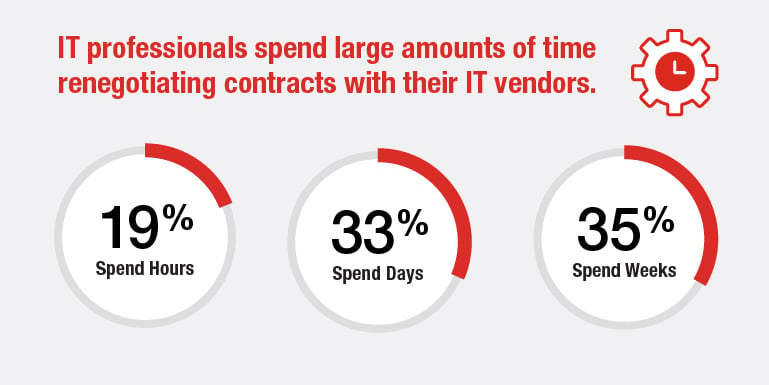
Want to see more results from the survey? Download the full report here.

